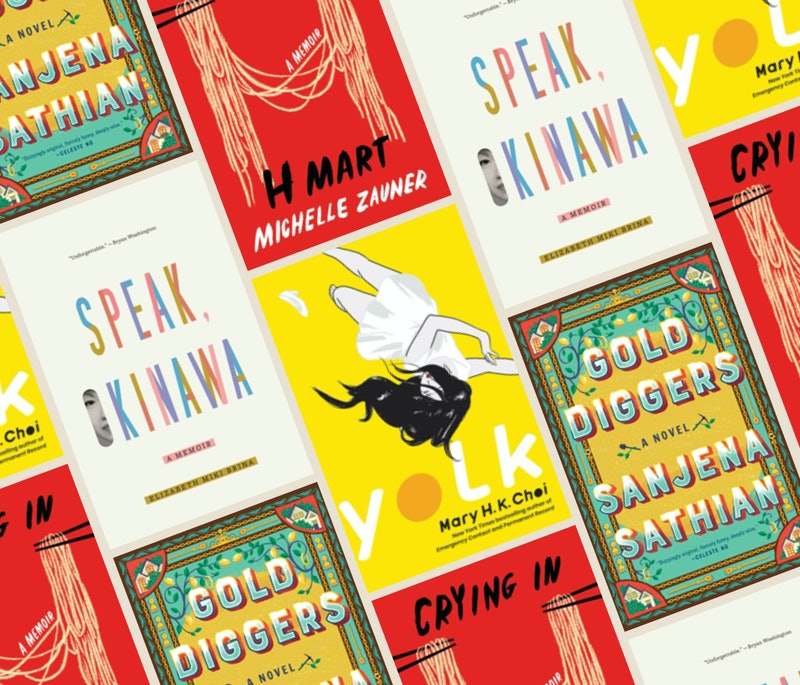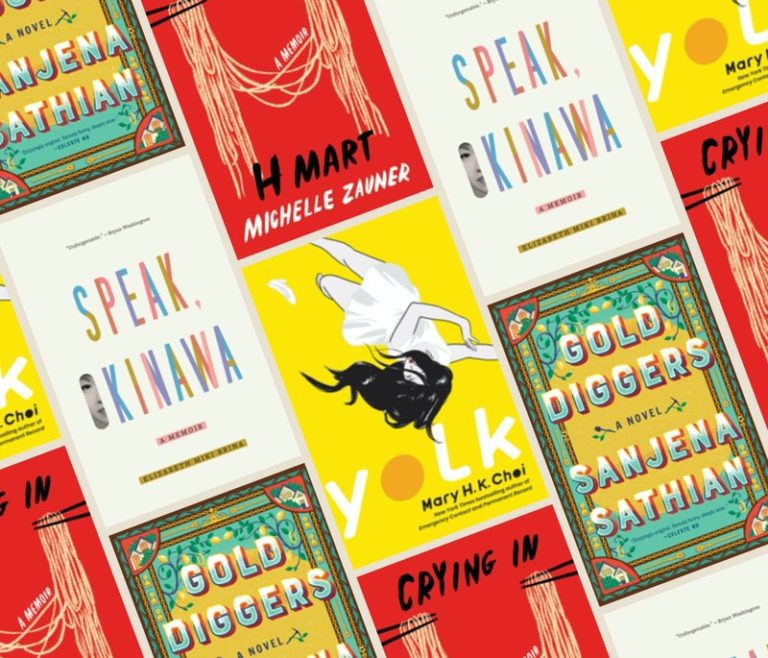
Since the drastic rise in anti-Asian hate, many of us have found ourselves with new reckonings of what it means to be Asian American. We may especially look to reconnect with our heritage.
When I find myself lost in my intersection of identities, I often look to writers. A few months ago, I took an Asian American Fiction class at my college in an effort to delve deeper into the making of Asian America.
Enveloped by novels, poems, and short stories that tackled immigrant upbringings—I felt incredibly seen.
Chinatowns, cultural mythmaking, racial stereotypes, the Model Minority Myth, queerness, migration, language, adoption, mixed heritages, diaspora! All in all, I found that fraught sense of belonging so uniquely ours.
The following list of books is not the same I encountered in my Asian American Fiction class. Rather, these are compulsively readable books and approachable authors whose words continue to help me unpack who I am.
1. Minor Feelings: An Asian American Reckoning by Cathy Park Hong
Poet and essayist Cathy Park Hong blends memoir, cultural criticism, and history to expose the truth of racialized consciousness in America. Binding everything together is her theory of “minor feelings.”
Or, when American optimism contradicts your own reality—when you believe the lies you’re told about your own racial identity.
Hong talks about her relationship to the English language, shame and depression, poetry and art making, and family and female friendship in a search to uncover the truth. As a result, her essays are extremely illuminating on internalized racial myths and identities.
True to its title, this book inspires a personal Asian American reckoning.
2. Not Quite Not White: Losing and Finding Race in America by Sharmila Sen
When Sen emigrated from India to the U.S. in 1982 at the age of 12, she was asked to "self-report" her race. Sen never identified with a race previously.
She rejects her new "not quite white" designation, and spends much of her life attempting to become “white” in the American sense.
Here, Sen asks hard questions: What does it mean to be “white?"
Who is allowed to be white? Why does whiteness retain the power of invisibility while other colors are made hypervisible? And how much does whiteness figure into American-ness?
This is a book that will make you question and reexamine words that we use to describe immigrants and Asian Americans. Sen shows us the difference between “American” and “Americanized.”
The mistake in celebrating immigration as an arrival in a new country, and how America might, by the end of the century, end up being defined outside its borders, in a new diaspora.
3. Fairest by Meredith Talusan
Fairest is a memoir about a precocious boy with albinism, a “sun child” from a rural Philippine village, who would grow up to become a woman in America.
As an immigrant to the United States, Talusan came to be perceived as white. An academic scholarship to Harvard provided access to elite circles of privilege.
Still, Talusan navigates through the complex spheres of race, class, sexuality, and her place within the gay community. She emerges as an artist and an activist questioning the boundaries of gender.
Talusan’s story is informed by the social, historical and political contexts of each environment she has called home. As a result, this book makes you deeply consider the ways in which we pass through society—and through life.
4. The Astonishing Color of After by Emily X.R. Pan
Leigh Chen Sanders is absolutely certain about one thing: When her mother died by suicide, she turned into a bird.
Leigh, who is half Asian and half white, travels to Taiwan to meet her maternal grandparents for the first time. There, she is determined to find her mother, the bird.
In her search, she winds up chasing after ghosts, uncovering family secrets, and forging a new relationship with her grandparents. And as she grieves, she must reconcile that same day she kissed her best friend and longtime secret crush, her mother was taking her own life.
Alternating between real and magic, past and present, friendship and romance, hope and despair, The Astonishing Color of After is a novel about finding oneself through family history, art, grief, and love.
5. This Is Paradise by Kristiana Kahakauwila
Kristiana Kahakauwila travels the islands of Hawai'i, making the fabled place her own. She explores the deep tensions between local and tourist, tradition and expectation, façade and authentic self.
This Is Paradise provides an unforgettable portrait of life as it’s truly being lived on Maui, Oahu, Kaua'i and the Big Island.
In the gut-punch of “Wanle,” a beautiful and tough young woman wants nothing more than to follow in her father’s footsteps as a legendary cockfighter. In the title story, the women of Waikiki tell the tale of a young tourist drawn to the darker side of the city’s nightlife.
Kahakauwila’s stories remind us of the powerful desire to belong, to put down roots, and to have a place to call home.
6. Interior Chinatown by Charles Yu
Willis Wu doesn't perceive himself as a protagonist even in his own life: he's merely Generic Asian Man. Every day, he leaves his tiny room in a Chinatown SRO and enters the Golden Palace restaurant.
There, Black and White, a procedural cop show, is in perpetual production. He’s a bit player here too. . . but he dreams of being Kung Fu Guy—the highest aspiration he can imagine for a Chinatown denizen. Or is it?
After stumbling into the spotlight, Willis finds himself launched into a wider world than he's ever known. He discovers not only the secret history of Chinatown, but the buried legacy of his own family, and what that means for him, in today's America.
This is a sharply satirical and deeply personal novel about race, pop culture, immigration, assimilation, and escaping the roles we are forced to play. Yu’s characters are literal plays on Hollywood tropes and Asian stereotypes, and their experiences will both make you laugh and feel utterly seen.
7. Last Night at the Telegraph Club by Malinda Lo
Seventeen-year-old Lily Hu can’t remember exactly when the question took root, but the answer was in full bloom the moment she and Kathleen Miller walked under the flashing neon sign of a lesbian bar called the Telegraph Club.
America in 1954 is not a safe place for two girls to fall in love, especially not in Chinatown. Red-Scare paranoia threatens everyone, including Chinese Americans like Lily.
With deportation looming over her father—despite his hard-won citizenship—Lily and Kath risk everything to let their love see the light of day.
This queer historical YA novel is heart-wrenching and captures 1950s San Francisco during the Red Scare while also celebrating and reclaiming often-erased queer AAPI histories. It’s a gripping story of love and duty that will set your heart on fire.
8. They Called Us Enemy by George Takei
Long before actor/author/activist George Takei braved new frontiers in Star Trek, he woke up as a four-year-old boy to find his own birth country at war with his father's—and their entire family forced from their home into an uncertain future.
In 1942, at the order of President Franklin D. Roosevelt, every person of Japanese descent on the west coast was rounded up and shipped to one of ten “relocation centers.”
These were hundreds or thousands of miles from home, where they would be held for years under armed guard.
A graphic novel and memoir, They Called Us Enemy is Takei's firsthand account of those years behind barbed wire.
The joys and terrors of growing up under legalized racism, his mother's hard choices, and his father's faith in democracy plant the seeds for his astonishing future. This should be required reading in schools.
9. The Sympathizer by Viet Thanh Nguyen
It is April 1975, and Saigon is in chaos. At his villa, a general of the South Vietnamese army is drinking whiskey and draws up a list of those who will board the last flights out of the country. The general and his compatriots start a new life in Los Angeles.
However, they are unaware that their captain is secretly observing and reporting on the group to a higher-up in the Viet Cong.
The Sympathizer is the story of this captain: a man brought up by an absent French father and a poor Vietnamese mother, a man who went to university in America, but returned to Vietnam to fight for the Communist cause.
In the form of a gripping spy novel, Viet Thanh Nguyen explores extreme politics, a moving love story, a life between two worlds. This is an examination of the legacy of the Vietnam War in literature, film, and the wars we fight today.
10. From a Whisper to a Rallying Cry: The Killing of Vincent Chin and the Trial that Galvanized the Asian American Movement by Paula Yoo
America in 1982: Japanese car companies are on the rise and believed to be putting U.S. autoworkers out of their jobs. Anti–Asian American sentiment simmers, especially in Detroit.
A bar fight turns fatal, leaving a Chinese American man, Vincent Chin, beaten to death at the hands of two white men. They are autoworker Ronald Ebens and his stepson, Michael Nitz.
Paula Yoo has crafted a searing examination of the killing and the trial and verdicts that followed. Ebens and Nitz pled guilty to manslaughter and received only a $3,000 fine and three years’ probatio.
The lenient sentence sparked outrage. The protests that followed led to a federal civil rights trial—the first involving a crime against an Asian American—and galvanized what came to be known as the Asian American movement.
Extensively researched from court transcripts, contemporary news accounts, and in-person interviews with key participants, From a Whisper to a Rallying Cry is a suspenseful, nuanced, and authoritative portrait of a pivotal moment in civil rights history, and a man who became a symbol against hatred and racism.
More Readings Lists
The aforementioned books struck deep, resonant chords in my heart. In many ways, this reading list carries diverse, intersectional, and reclaimed pieces of histories and identities. So we hope you feel empowered by the words of AAPI authors to both celebrate our heritage and do the often difficult work of unpacking our pasts and ourselves.
Let us know: what books shifted how you view the Asian American identity? Who are your favorite AAPI authors—which of their books would you add to this list?
To conclude, if you are interested in more AAPI literature, we recommend:











0 Comments